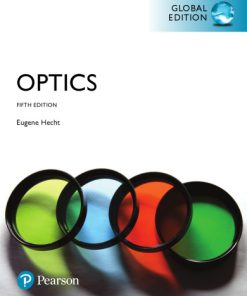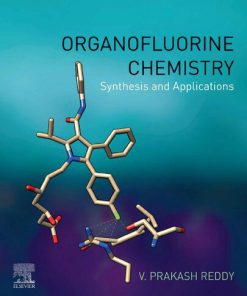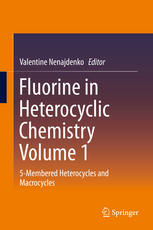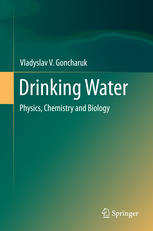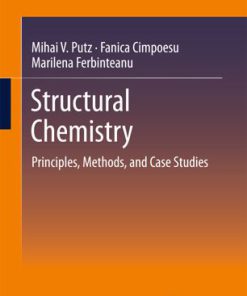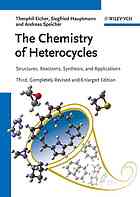Incorporation of Heterocycles into Combinatorial Chemistry 1st Edition by Eugene Babaev 3319500157 9783319500157
$50.00 Original price was: $50.00.$25.00Current price is: $25.00.
Incorporation of Heterocycles into Combinatorial Chemistry 1st Edition by Eugene V. Babaev – Ebook PDF Instant Download/DeliveryISBN: 3319500157, 9783319500157
Full download Incorporation of Heterocycles into Combinatorial Chemistry 1st Edition after payment.
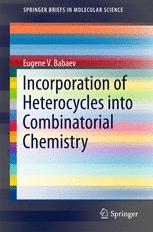
Product details:
ISBN-10 : 3319500157
ISBN-13 : 9783319500157
Author: Eugene V. Babaev
The author has summarized a decade of teaching combinatorial chemistry into this timely brief. The solid phase synthesis of unnatural heterocyclic alpha-amino acids is illustrated by practical examples starting from the ABCs of peptide synthesis explored in chapter one. Chapter two is concerned with the solid phase synthesis which is shown on various techniques – BillBoard, tea-bag, and Lantern devices, and demonstrated on heterocyclic examples and protocols. In the third chapter the tools for accelerating chemical synthesis – solid phase and liquid phase – are reviewed. Here the techniques of parallel refluxing (including microwave and flow technique) and parallel separation (filtration, centrifugation, evaporation, and chromatography) are described. In the chapters 4 and 5 the author goes on to describe how the liquid phase synthesis of heterocycles (reductive amination and Ugi reaction of heterocycles) is illustrated with the use of semi-automated protocols. Finally, the design of combinatorial libraries of heterocycles is reviewed including the original author’s findings.
Incorporation of Heterocycles into Combinatorial Chemistry 1st Table of contents:
1 Peptide Synthesis of Libraries of Non-natural Amino Acids
1.1 Statement of the Problem
1.2 Solid-Phase Organic Synthesis
1.2.1 Specific of SPOS
1.2.2 Polymers Used
1.2.3 Methodology and Principal Stages of SPOS
1.2.3.1 Stage 1: Immobilization of N-Substituted Amino Acids on Polymer Supports
1.2.3.2 Stage 2: Deblocking Substituted Amino Acids on Polymer Supports
1.2.3.3 Stage 3: Nucleophilic Substitution in Heterocycles, Involving Polymer-Immobilized Amino Acid
1.2.3.4 Stage 4: Removal of Target Compounds from Polymer Supports
1.2.3.5 Equipment and Materials
1.3 Practical Implementation of the Task
1.3.1 Stage 1: Immobilization of Amino Acids on Supports
1.3.2 Stage 2: Removal of Protective Groups
1.3.3 Synthesis of Heterocycles with a Readily Leaving Group
1.3.4 Realization of Stage 3 (Solid-Phase Nucleophilic Substitution) and Stage 4 (Product Removal fr
1.3.4.1 Synthesis of N-(Pyrimidin-2-yl) Amino Acid Derivatives
1.3.4.2 Synthesis of N-(5-Nitrothiazol-2-yl) Amino Acid Derivatives
1.3.4.3 Synthesis of N-(5-Nitropyridin-2-Yl) Amino Acid Derivatives
1.4 Conclusions
References
2 The Choice of Tools for Implementing Multistage Transformations. SPOS for Beginners
2.1 Bill-Board Technique
2.1.1 Chemical Aspect of the Task
2.1.2 Specific Features of the Bill-Board Kit
2.1.3 A Brief Description of the Task
2.1.4 Reagents Used
2.1.5 Implementation of the Task
2.1.5.1 Lesson 1. Alkylation (Scheme 2.4)
2.1.5.2 Lesson 2. Protection Removal and N-Acylation
2.1.5.3 Lesson 3. Removal of N,C-Substituted Amino Acid from Support
2.1.5.4 Lesson 4. Determination of Product Yields and TLC Analysis
2.2 Tea-Bag Technique
2.2.1 Reaction Sequence
2.2.2 Implementation of the Work
2.3 Syntheses with Lantern Rods
2.3.1 Choice of Model Reaction
2.3.2 Transformation Sequence and Methodical Notes
2.3.3 Preparation of N,N′,N′′-Trisubstituted Guanidines on Lanterns
2.4 Conclusions
References
3 Secrets of Parallel Liquid-Phase Synthesis
3.1 Technology of Parallel LPOS
3.1.1 Parallel Refluxing
3.1.2 Parallel Boiling Without Condensers
3.1.3 Synthesis in Microwave Ovens
3.1.4 Syntheses in Flow Microreactors
3.2 Separation of the Reaction Mixtures
3.2.1 Parallel Extraction
3.2.2 Parallel Filtration
3.2.3 Parallel Centrifugation
3.2.4 Evaporation of Solutions
3.2.5 Parallel Purification
3.3 Conclusions
References
4 Most Combinatorial LPOS Reaction: Reductive Amination with a Scavenger
4.1 Reductive Amination
4.2 Synthesis Without Special Equipment
4.3 Technology of Microsynthesis in Plates
4.4 Liquid-Phase Parallel Synthesis in SynCore Apparatus
4.5 Conclusions
References
5 A Parallel Ugi Reaction
5.1 Basic Information on the Ugi Reaction
5.2 Experience in Accomplishing the Ugi Reaction Without Special Equipment
5.2.1 Practical Implementation of the Work
5.3 Variant of Implementing the Task with SynCore
5.3.1 Practical Implementation of the Task
5.4 Conclusions
References
6 Combinatorial Heterocyclic Chemistry in Higher School
6.1 Certain Applied Aspects of Heterocyclic Chemistry
6.2 Synthesis of Antimicrobial Aminodienes
6.3 Synthesis of 5-Aminoindolizines with Adrenergic Activity
6.4 Synthesis of Imidazole Anxiolytics
6.5 Biologically Active 2-Aminoimidazoles
6.6 Other Examples of Practical Application of New Reactions
6.7 Conclusions
People also search for Incorporation of Heterocycles into Combinatorial Chemistry 1st:
combinatorics chemistry
heterocycles chemistry
heterocycle formation
bicyclic nitrogen heterocycles
bicyclic heterocycles
Tags: Incorporation, Heterocycles, Combinatorial Chemistry, Eugene Babaev
You may also like…
Physics - Optics
Chemistry - Organic Chemistry
Organofluorine Chemistry – Synthesis and Applications 1st Edition Reddy V. Prakash
Chemistry - Organic Chemistry
Science (General)
Drinking Water Physics Chemistry and Biology 1st Edition Vladyslav V. Goncharuk (Auth.)
Chemistry - Inorganic Chemistry
Advanced Experimental Inorganic Chemistry 1st Edition Ahluwalia V K Dhingra Sunita
Chemistry
The chemistry of heterocycles structure reactions synthesis and applications Speicher 9783527601837
Science (General)
Organometallic Chemistry of Five-Membered Heterocycles 1st Edition Dr. Alexander Sadimenko





